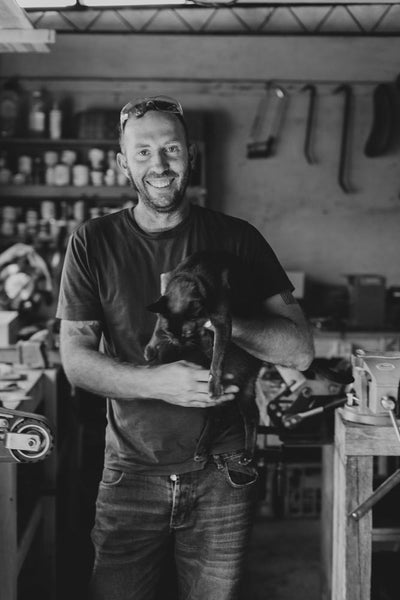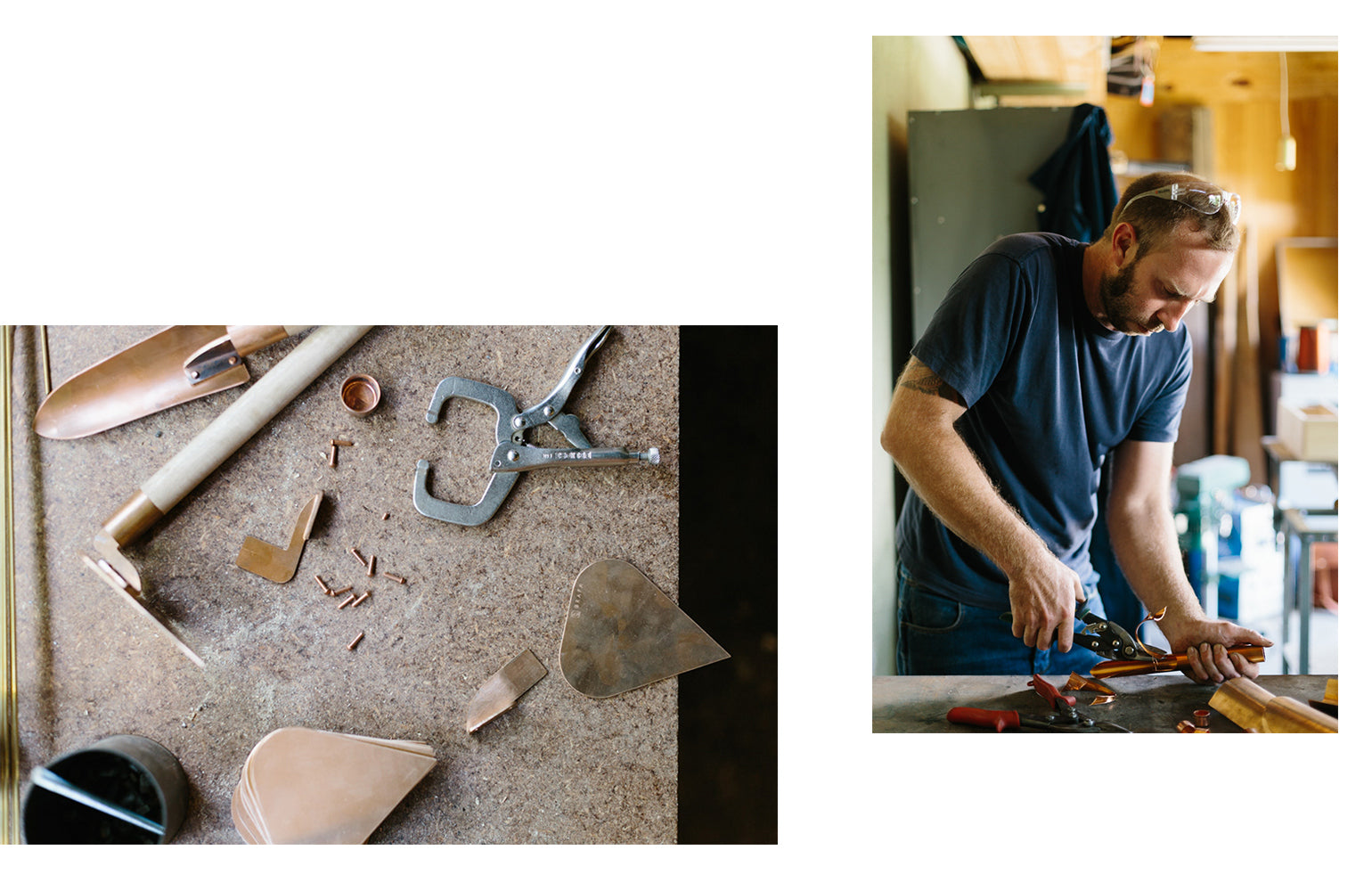
Travis Blandford
Maker Profiles
The Garden Edit came across Grafa last year. Their handmade copper tools instantly caught our eye and since then they have become a staple in our shop. Their maker, Travis Blandford, opens up his workshop and tells us all about how they are made.

So Travis, how and when did Grafa come about?
The idea for the business came about during a creative period of time I spent with my cousin while living in Queensland a few years ago. We shared an interest in organic gardening and permaculture. We tossed a few ideas around and ended up making some garden tools from old copper tube that was lying around. We made some pretty wacky designs at the time and from then my interest grew, so when I decided to move to Melbourne I realised it was a great place to develop these ideas.
How would you describe your business?
It started as an exercise in micro-manufacturing with an emphasis on the value of recycled and readily available materials, low waste processes and the utility of the end product. It was amazing to realise after doing the maths that we can actually live in a bit of a false economy where we own all these products which capitalise on low cost of labour. It has now evolved into a business which exists largely because of these design efficiencies I developed over the years. The reason why the tools look the way they do is because I had to find a way to design without the use of expensive machinery. The single piece copper tube tools were there from the beginning, while the timber handled range came later, as the processes became more sophisticated.

Tell us about the team behind Grafa?
There are two of us now. My partner Harriet has become more involved over the last year, she has a background in interior design. We talk in a lot of detail about everything to do with the business but we have pretty different roles when it comes to the day to day. I largely do the designing and making of the tools and the stands, as well as work on new product development. Harriet works a lot more closely with the retailers and communicating with our online customers. She also brings a lot of new ideas to the table about where Grafa could be heading and handles all the social media. So it’s definitely a team effort now. I also occasionally get help from a friend or my Dad in the workshop when we are really busy.

The Austrian naturalist movement inspires your work? How did you come across it?
Through my interest in invention, I was researching ideas and found a website detailing some of Victor Shauberger’s work in the natural sciences. I was really taken by some of his observations of nature and water. I then read some of his material in books translated and written by Callum Coats and became very interested with his studies on the benefits of copper and copper alloys in agriculture.

What’s the process you go through when making tools?
It is quite the process! When making tools I will methodically cut, linish, de-burr, drill and bend each required part, not dissimilar to how a metal fabrication shop would do it. Because it is such a repetitive process I have made many jigs to make the job easier. I don’t have any hydraulic presses, so I do all of the bending and folding of the material by hand. I made a 12V stereo from an old welding machine case a few years ago so I usually turn the radio on and get into a rhythm.

Why did you choose copper for your tools? What stands out about this material?
Aside from the potential for copper to improve growth and nutrient uptake in the garden, I have really come to love its other properties. For a start it is very rich and beautiful, it also doesn’t rust, will easily work through soil and will last a long time. We would really like to encourage people to enjoy their gardens as much as possible. We like the idea of beautiful materials helping to connect people more closely to their plots and patches, and therefore their kitchens.
Do you see yourself expanding the range?
There are lots of ideas. I have just finished designing the low waste custom packaging which I am very happy with and I am looking forward to seeing it in use. After that I am going to complete the wall hanging device for people to use for their tools. There are also plans to include a watering can and plant stand. There is also a second range in the pipeline, as well as a few other accessories. Lots of ideas!

What can you tell us about your workspace?
At the moment the workshop is in an 80 year old cinder block shed out the back of our house in the suburb of Seddon. It’s just west of the Maribrynong River in the inner west of Melbourne. It’s great, I can look out onto the garden and the winter sun shines in over my workbench.

Are you a big gardener?
I really became fully interested in gardening about 5 years ago after attending a permaculture design course in Melbourne. I then went back to Queensland to do some Woofing for a year. Ever since then I’ve always had a garden, I am mainly interested in edible plants and Harriet has a strong ornamental interest so together we have a pretty active patch.
Tell us a bit about your garden/gardening in Australia?
Our main garden beds have an old blue stone edging that came from the early days of road paving in Melbourne. A friend of Harriet’s had excess from a renovation so we were very happy to accept it. We arranged them into two large beds on either side of the path where there is plenty of sun. We both like the slightly wilder side of gardening, a friend described it as an Alice in Wonderland style of garden, I supposed there is an element of whimsy, with wild flowers in the spring and all sorts of herbs surrounding the structured beds. That is probably Harriet’s influence. The beds are usually crammed with seasonal vegetables, the Mortgage Lifter tomatoes were excellent this year. We let things go to seed which I love. I just pulled a giant lettuce from brick barbeque which grew out from the cracks for about year. It’s a temperate climate here and frost free because of the proximity to the coast, so we can grow salad greens all year round and there's always lemons on the tree.
